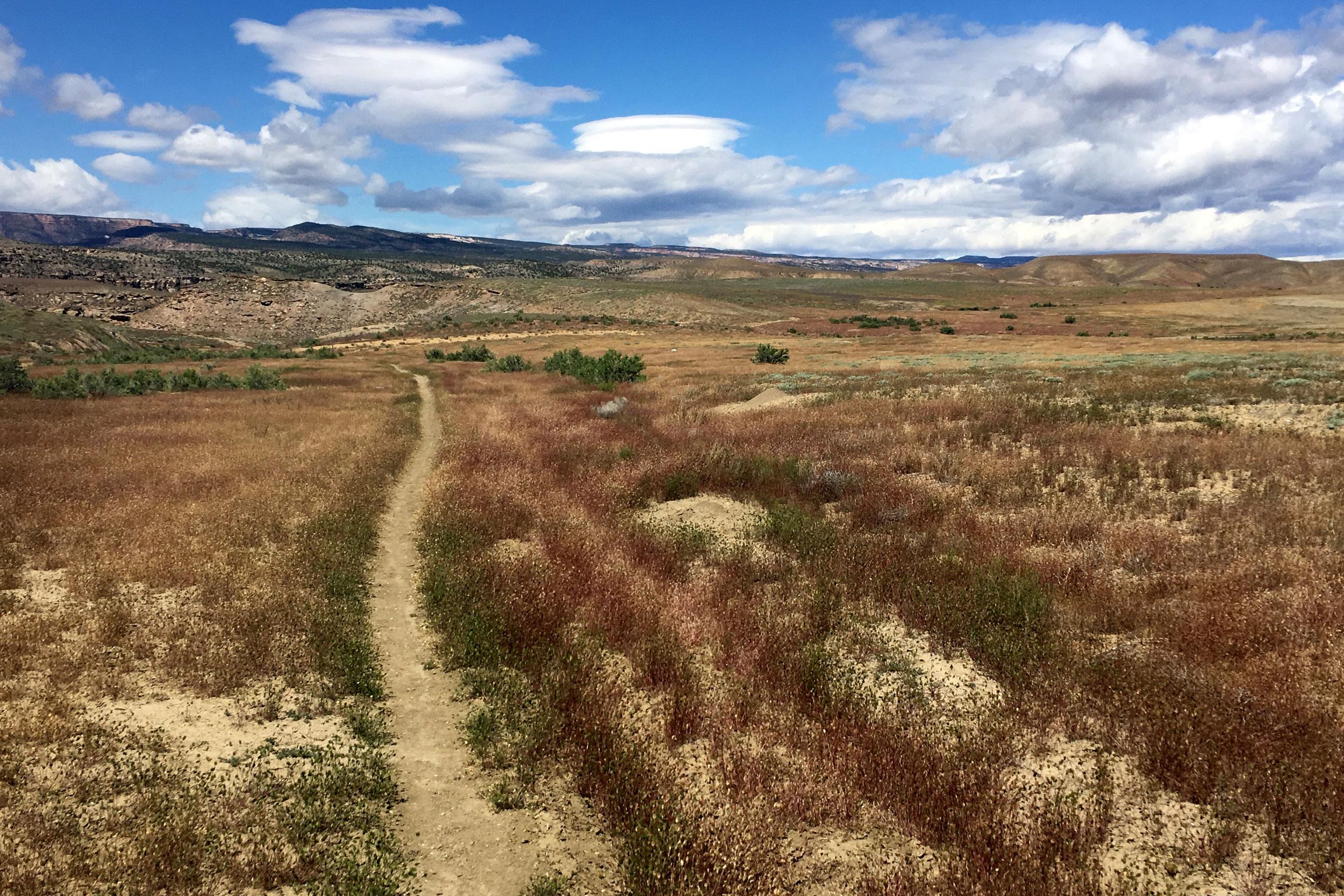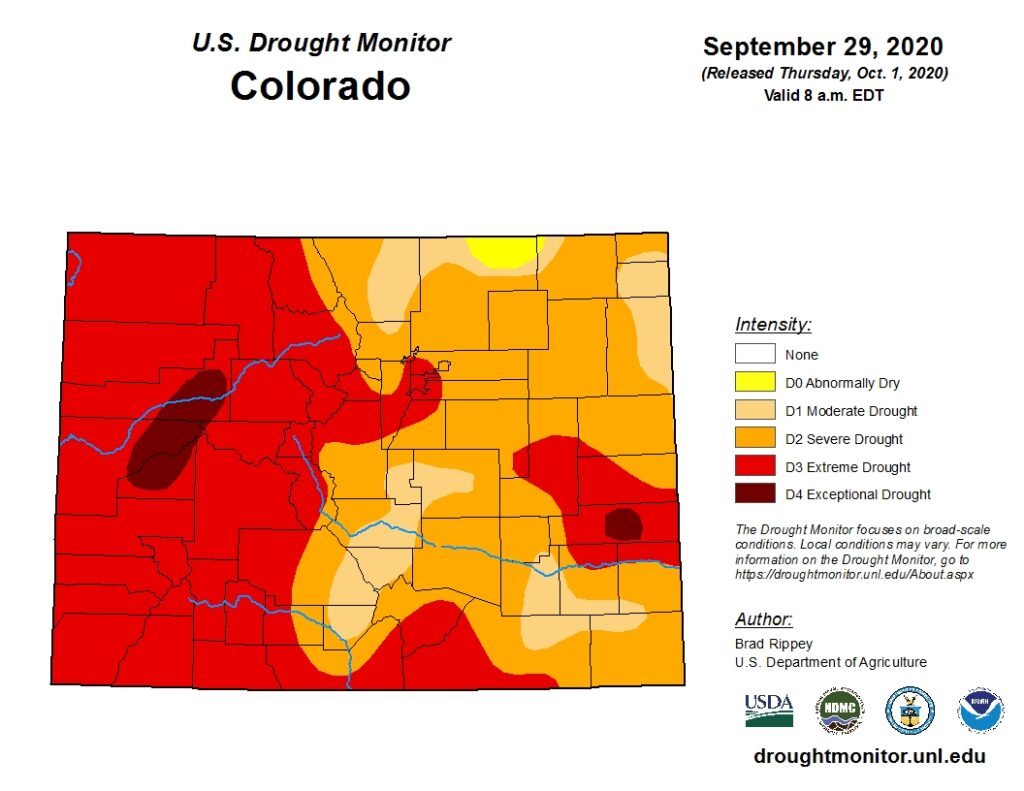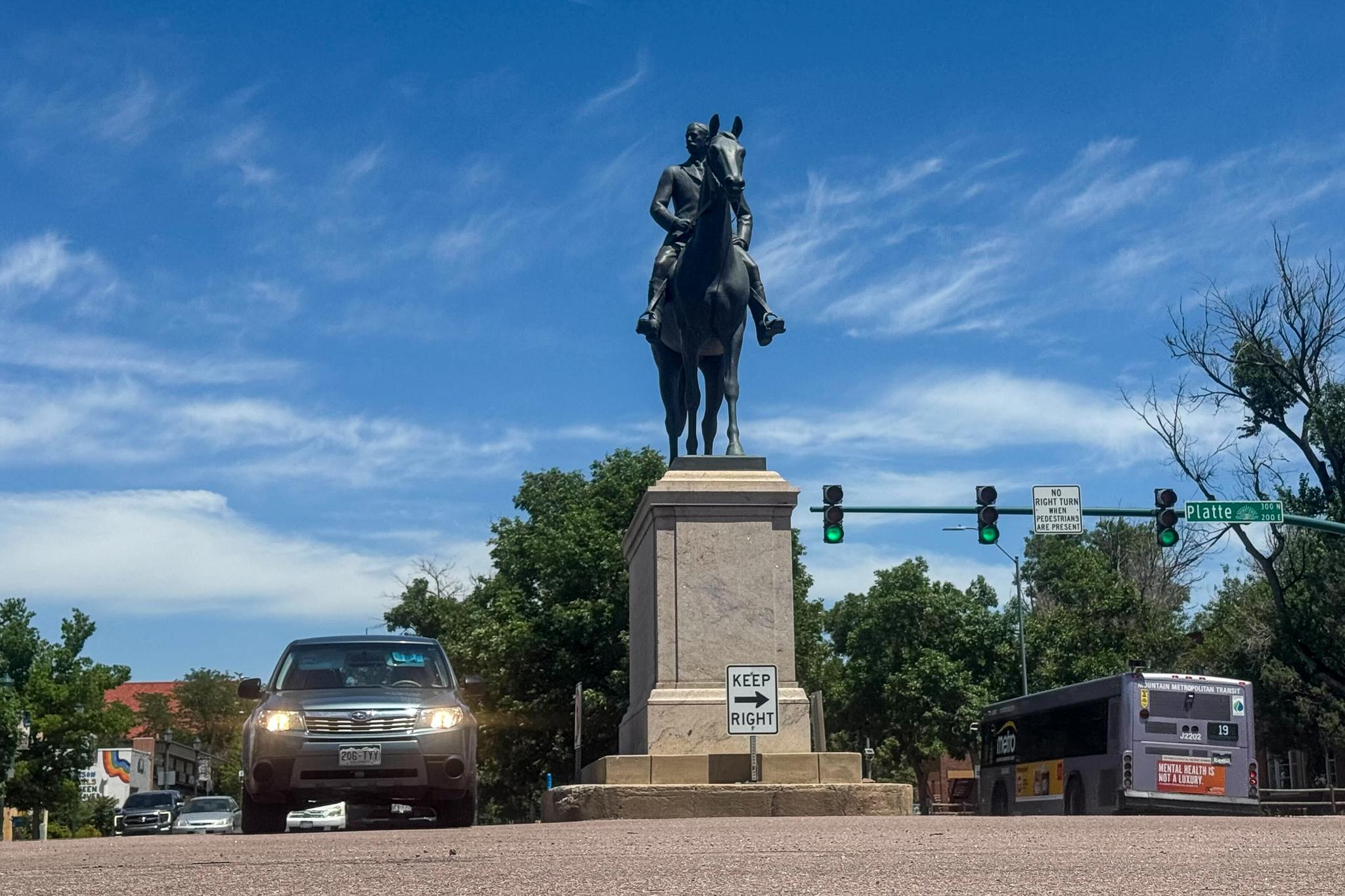
Colorado's drought conditions have worsened this week.
According to the U.S. Drought Monitor, nearly 90 percent of the state is in a severe drought, and more than half is considered in extreme drought. Parts of Kiowa County in the Eastern Plains continue to struggle with the most severe category of exceptional drought.
This week, the monitor reports that parts of Mesa, Delta, Garfield and Pitkin counties are now also experiencing exceptional drought. These areas could see widespread crop and pasture losses and water-shortage emergencies, according to the monitor.

Gov. Jared Polis has expanded the second phase of the state's drought response plan to all Colorado counties. This phase means a drought task force assesses initial damages and impacts of drought and recommends mitigation measures. The Agricultural Impact Task Force is also activated, which will conduct an assessment on physical and economic impacts, as well as recommend mitigation opportunities.
Polis sent a letter to the U.S. Department of Agriculture, asking for emergency relief for Colorado producers.
"Farmers and ranchers in Colorado are suffering deep financial losses due to persistent drought conditions, extreme weather events, and compounding disasters," the letter reads. "Our state’s producers report significant barriers to accessing financial relief from multi-year (2018 drought, 2019 freeze, 2020 drought), multi-faceted (economic, environmental, and public health) disasters."
- August Was Colorado’s Hottest On Record. Now More Than Half The State Is In An Extreme Drought
- Wildfires Have Burned Colorado’s Iconic Forests. Because Of Climate Change, Some Won’t Grow Back The Same
- Nearly Three-Fourths Of Colorado Is Seeing Severe Drought, And There’s A Lot Of Reasons Why
- Colorado Wildfires Are Climate Change ‘In The Here And Now’ — And A Sign Of Summers To Come
The state agriculture task force has set up a "Drought Virtual Tour," with a goal "to hear from producers and communities significantly impacted by drought," through the website and through local interviews.
Dustin Stein, a first-generation ranch manager west of Durango in Mancos, Colorado wrote, "I've been in the business for a decade and, in my 10 short years, have gotten whiplash from how extreme all of our weather events have become."
"Overall, I think we need to change the semantics and management around drought. Drought tends to carry a notion of impermanence. We are essentially in our third year of drought, which, feels more permanent and requires a different mindset and management of our beautiful resources," Stein wrote.









